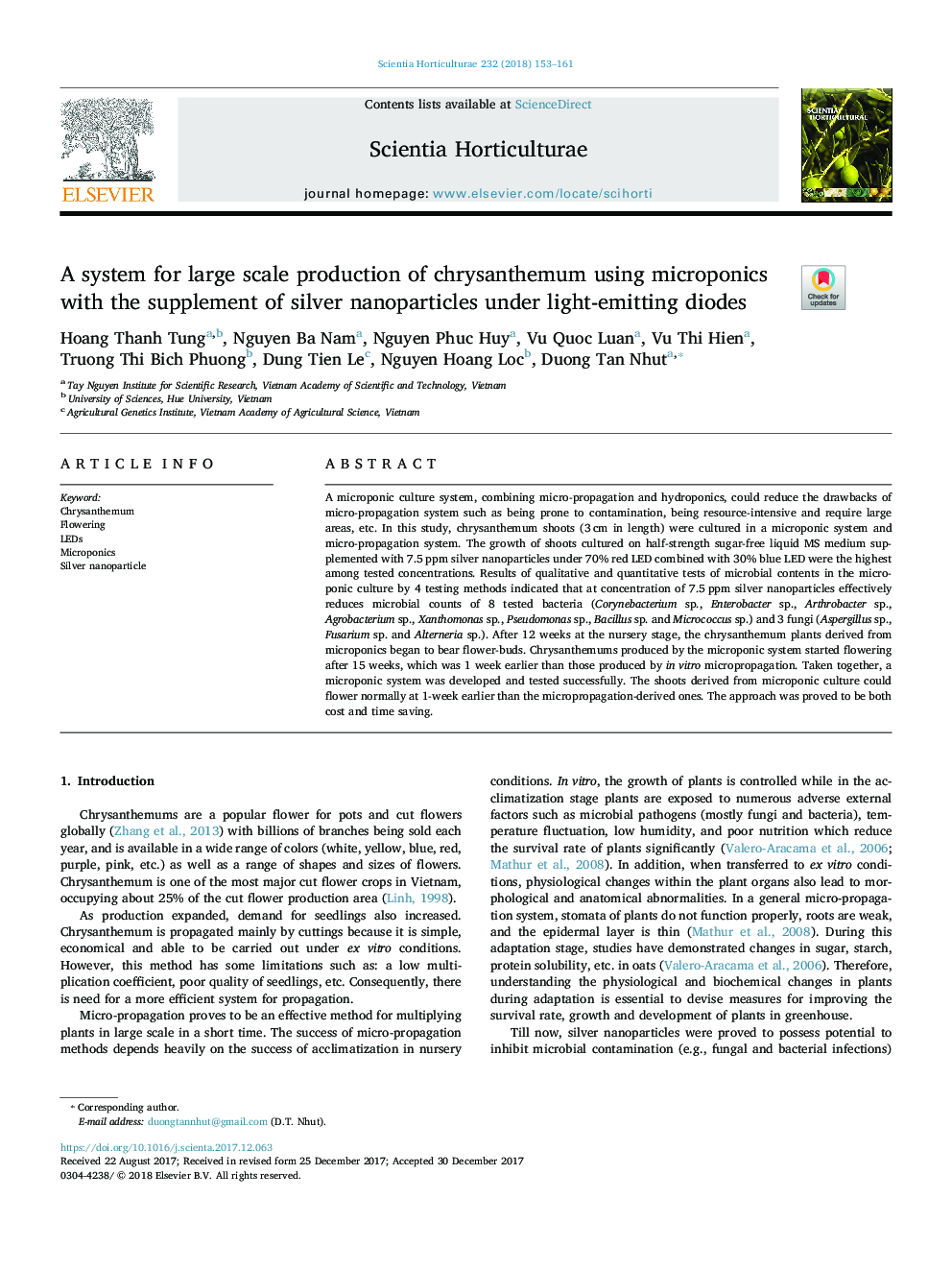| Article ID | Journal | Published Year | Pages | File Type |
|---|---|---|---|---|
| 8892933 | Scientia Horticulturae | 2018 | 9 Pages |
Abstract
A microponic culture system, combining micro-propagation and hydroponics, could reduce the drawbacks of micro-propagation system such as being prone to contamination, being resource-intensive and require large areas, etc. In this study, chrysanthemum shoots (3â¯cm in length) were cultured in a microponic system and micro-propagation system. The growth of shoots cultured on half-strength sugar-free liquid MS medium supplemented with 7.5â¯ppm silver nanoparticles under 70% red LED combined with 30% blue LED were the highest among tested concentrations. Results of qualitative and quantitative tests of microbial contents in the microponic culture by 4 testing methods indicated that at concentration of 7.5â¯ppm silver nanoparticles effectively reduces microbial counts of 8 tested bacteria (Corynebacterium sp., Enterobacter sp., Arthrobacter sp., Agrobacterium sp., Xanthomonas sp., Pseudomonas sp., Bacillus sp. and Micrococcus sp.) and 3 fungi (Aspergillus sp., Fusarium sp. and Alterneria sp.). After 12 weeks at the nursery stage, the chrysanthemum plants derived from microponics began to bear flower-buds. Chrysanthemums produced by the microponic system started flowering after 15 weeks, which was 1 week earlier than those produced by in vitro micropropagation. Taken together, a microponic system was developed and tested successfully. The shoots derived from microponic culture could flower normally at 1-week earlier than the micropropagation-derived ones. The approach was proved to be both cost and time saving.
Related Topics
Life Sciences
Agricultural and Biological Sciences
Horticulture
Authors
Hoang Thanh Tung, Nguyen Ba Nam, Nguyen Phuc Huy, Vu Quoc Luan, Vu Thi Hien, Truong Thi Bich Phuong, Dung Tien Le, Nguyen Hoang Loc, Duong Tan Nhut,
